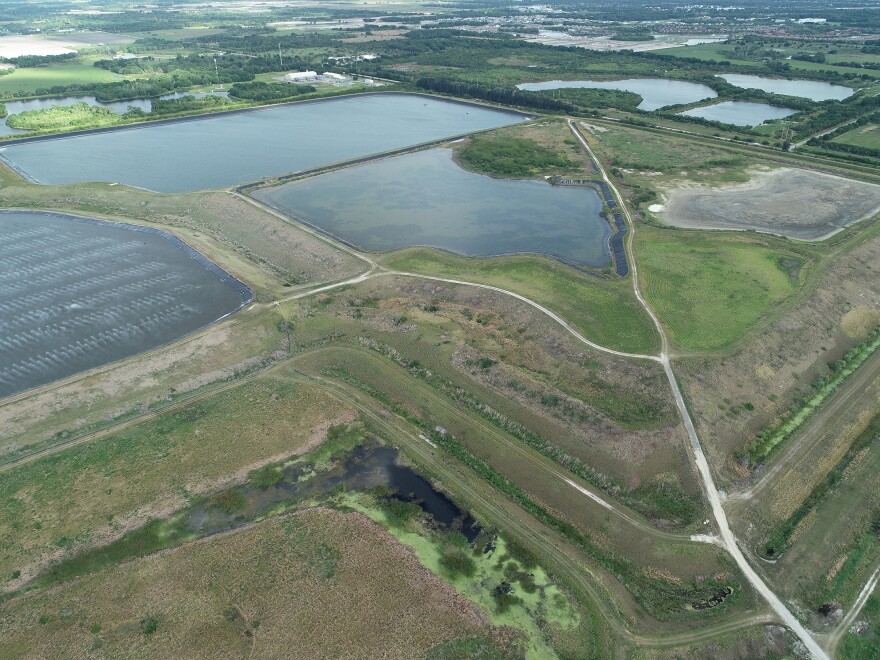Manatee County commissioners this week gave a green light to the design and service agreement of a new facility that will treat contaminated water from Piney Point before it’s injected into a deep well that is under construction.
But before that work begins, officials must contend with current issues at the site.
Since the beginning of the year, 27 inches of rain have accumulated in one of the gypsum stacks at the former Piney Point phosphate processing plant, and the plan is to pump that stormwater into Tampa Bay.
Last year, 215 million gallons of wastewater were discharged from the site into Tampa Bay because a leak at one of the plant's reservoirs threatened to cause a catastrophic breach.
"It would not be nearly as problematic as last year," said David Tomasko, executive director of the Sarasota Bay Estuary Program.
"What came out last year was liquid fertilizer, basically. That being said, it's still roughly equivalent to adding about a hundred bags of lawn fertilizer to Tampa Bay and we're not really in a healthy place right now in lots of lower Tampa Bay."
A recent study shows that release likely made a subsequent outbreak of red tide much worse.
Tomasko says despite the disaster, Tampa Bay is still healthier than it was in the 1970s.
"But if we don't get our act together and completely shut down Piney Point and do a better job with stormwater and do a better job with our wastewater infrastructure, what we suffered last year could become more common," Tomasko said. "We don't want to become the next Indian River Lagoon."
The stormwater that has accumulated sits on top of a layer of mud and silt that originally came from the dredging of Port Manatee.
Justin Tramble, executive with Tampa Bay Waterkeeper, says he is concerned that some of the sediment on that site may have some toxic nature.
"We just don't know because they have not have not been very clear regarding their monitoring plan," Tramble said.
"You would think there would be a higher level of scrutiny. Just because the water is not as toxic as what we saw last year during the breach, that ultimately caused one of the worst environmental disasters our region has ever seen — just because it's not that bad, doesn't mean that it is OK."
In December, state regulators issued a permit to allow hundreds of millions of gallons of polluted water from the stricken Piney Point plant to be pumped 3,000 feet below the surface.
Crews are already working to prepare for the drilling of the injection well, which is expected to be completed on Manatee County-owned property later this year.
Copyright 2022 WUSF Public Media - WUSF 89.7. To see more, visit WUSF Public Media - WUSF 89.7. 9(MDAyNDY5MjM1MDEyODE2MzMyMTZmZDQwMg001))





